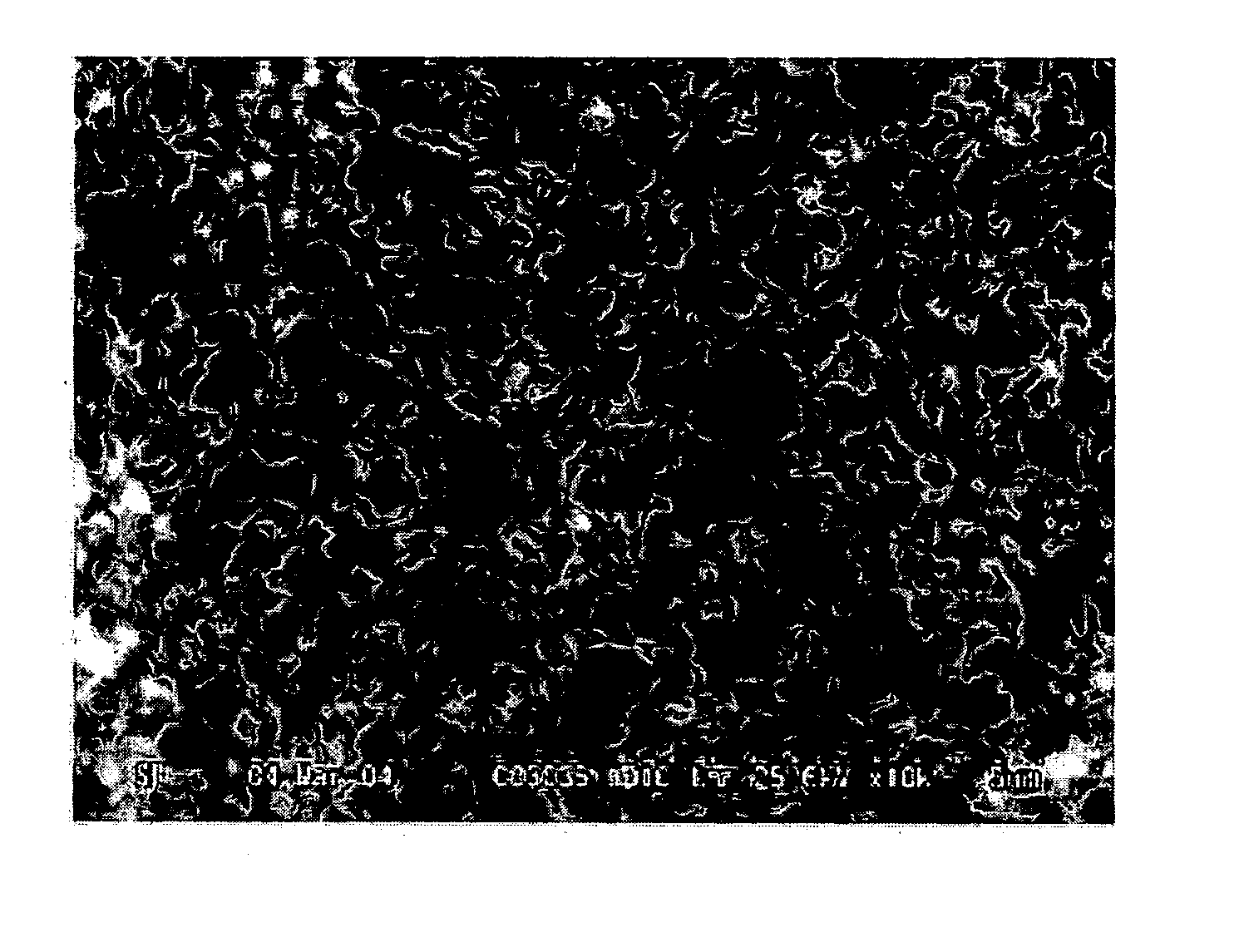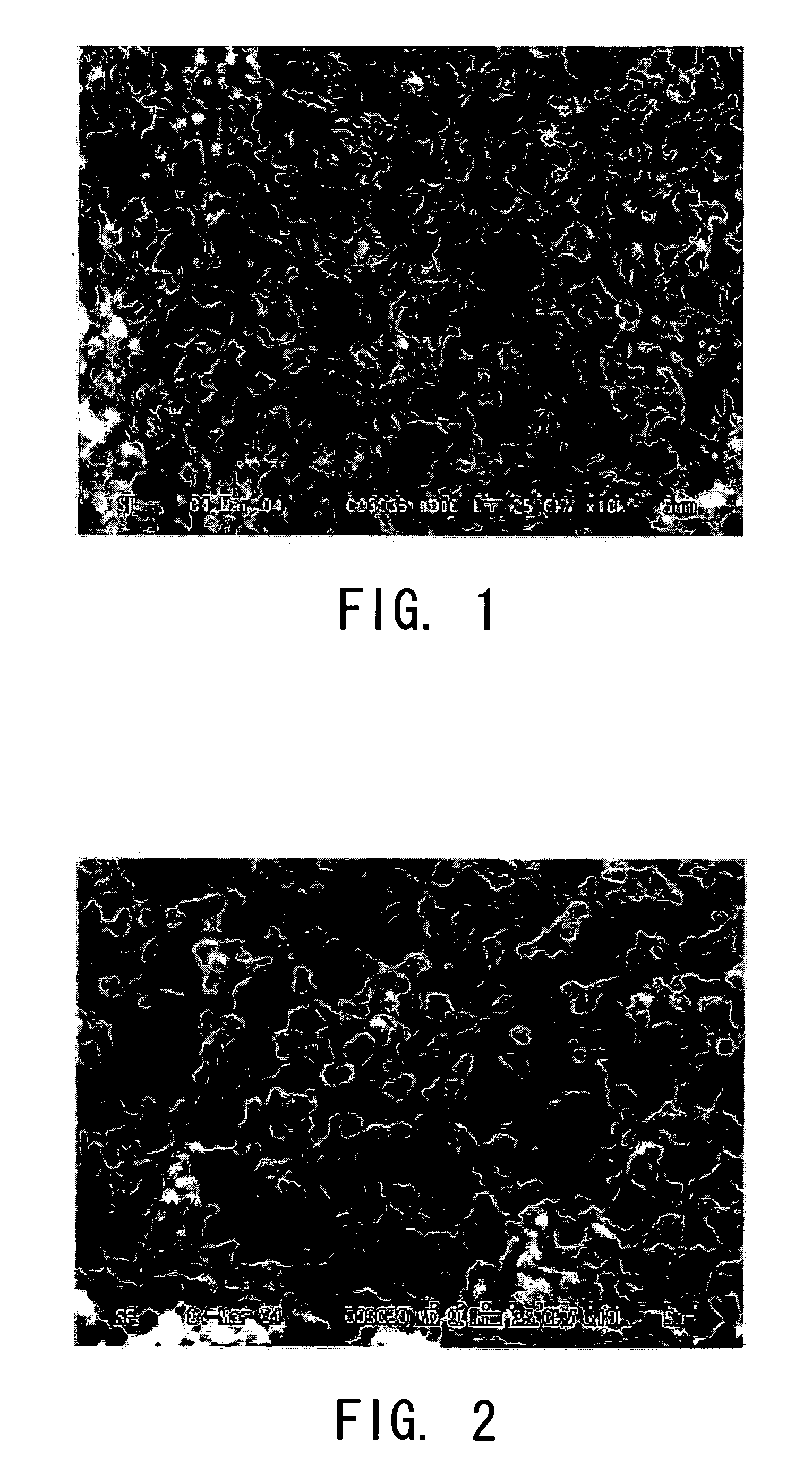Process for producing silica aerogel
- Summary
- Abstract
- Description
- Claims
- Application Information
AI Technical Summary
Benefits of technology
Problems solved by technology
Method used
Image
Examples
example 1
[0050] First, 9.5 g of methyltrimethoxysilane (manufactured by Shin-Etsu Chemical Co., Ltd., LS-530, hereinafter abbreviated as “MTMS”) and 5.0 g of polyethylene glycol (10) nonylphenyl ether (manufactured by NOF CORPORATION, NS210, hereinafter abbreviated as “NS210”), which was used as a nonionic surfactant, were mixed together and were dissolved uniformly. Thereafter, with the solution being stirred under freezing conditions, a 1-mol / L nitric acid aqueous solution was added thereto to cause a hydrolysis reaction. In this state, this was stirred under the freezing conditions for five minutes. In this step, the amount of the aqueous nitric acid solution was varied so that the ratio of MTMS:NS210:H2O was 1:0.1:(1.8, 2.0, or 2.2). Hereinafter, according to the mole ratio of water added to each solution, the solutions were referred to as MN21018, MN21020, and MN21022, respectively. Thereafter, they were allowed to stand still in an airtight container at 40° C. and thereby were gelled. ...
example 2
[0063] First, 1.819 g of 1-mol / L nitric acid aqueous solution, 7.315 g of formamide, and 5.0 g of nonionic surfactant NS210 were mixed together and were dissolved uniformly. Thereafter, with the solution being stirred under freezing conditions, 10.32 g of tetramethoxysilane (manufactured by Shin-Etsu Chemical Co., Ltd., LS-540, hereinafter abbreviated as “TMOS”) was added to the solution to cause a hydrolysis reaction. In this state, this was stirred under the freezing conditions for five minutes. In this case, the mole ratio of TMOS: formamide: H2O was 1:2.4:1.4. This composition is referred to as “TF14”. Thereafter, it was allowed to stand still in an airtight container at 40° C. and thereby was gelled. After being gelled, it was allowed to stand still at 80° C. under an airtight condition for 48 hours. Thus the gels were aged.
[0064] Thereafter the supercritical drying operation was carried out in the same manner as in Example 1. The pore diameter distribution of the sample havin...
example 3
[0075] First, 1.00 g of cetyltrimethylammonium bromide (also known as hexadecyltrimethylammonium bromide: manufactured by NACALAI TESQUE, INC., hereinafter abbreviated as “CTAB”) was dissolved in 10.00 g of 0.001-mol / L acetic acid aqueous solution. Thereafter, 0.50 g of urea (manufactured by NACALAI TESQUE, INC.) further was added thereto and was dissolved therein. After 5.0 g of MTMS was added thereto, it was allowed to undergo a hydrolysis reaction by stirring and mixing it under freezing conditions for 30 minutes. Thereafter, it was allowed to stand still in an airtight container at 60° C. and thereby was gelled. Successively, it was allowed to stand still for 96 hours. Thus the gel was aged. Subsequently, the alcogel was taken out of the airtight container. It was immersed in 2-propanol and thereby was subjected to the solvent substitution. This operation was carried out twice. The first operation was carried out at 60° C. for 24 hours. The second operation was carried out at 60...
PUM
 Login to View More
Login to View More Abstract
Description
Claims
Application Information
 Login to View More
Login to View More - R&D
- Intellectual Property
- Life Sciences
- Materials
- Tech Scout
- Unparalleled Data Quality
- Higher Quality Content
- 60% Fewer Hallucinations
Browse by: Latest US Patents, China's latest patents, Technical Efficacy Thesaurus, Application Domain, Technology Topic, Popular Technical Reports.
© 2025 PatSnap. All rights reserved.Legal|Privacy policy|Modern Slavery Act Transparency Statement|Sitemap|About US| Contact US: help@patsnap.com



